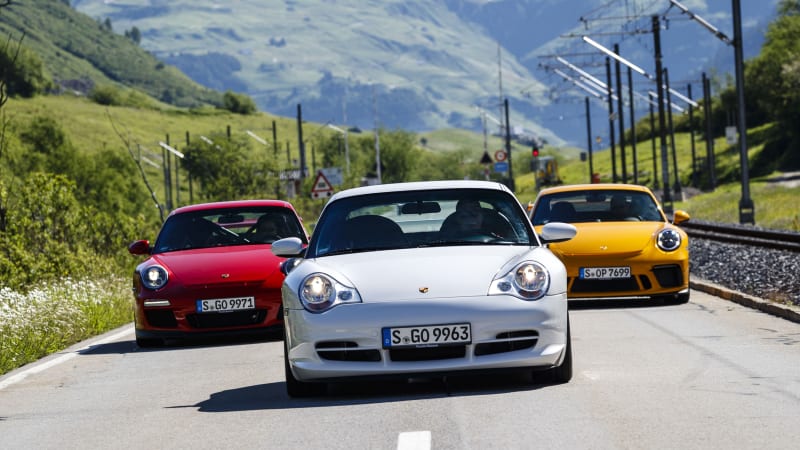The Porsche 911 GT3 has effortlessly tamed roads and tracks for 20 years
https://ift.tt/33hXJWQ

The Porsche 911 GT3 has bridged the gap between street-legal cars and track-only machines for 20 years. As it develops a new model, the Stuttgart-based firm is looking back at the history of one of the most respected 911 variants ever released. Odds are it’s not just a trip down memory lane, though; it’s also a way to announce the next GT3 is around the corner.
Like the standard 911, the GT3 has evolved considerably during the past two decades. The original, 996-based model hit the market and the track with a naturally-aspirated, 3.6-liter flat-six engine tuned to send 360 horsepower and 273 pound-feet of torque to the rear wheels via a six-speed manual transmission. Rally pilot Walter Rӧhrl leveraged its ability to hit 187 mph to lap the Nürburgring-Nordschleife in 7:56.33. This result might not sound impressive in 2019, not when the front-wheel drive Renault Megane RS angrily clocks 7:40, but it was jaw-dropping in 1999.
911 fans loved the GT3; many took it racing, too. Porsche updated it with a 381-horsepower, 285-pound-feet evolution of the six before replacing it with a new model based on the 997-generation 911 in 2006. The second-generation model raised the stakes with a 415-horsepower six and a 193-mph top speed. Aluminum helped offset the weight added by mandatory equipment like airbags.
Porsche couldn’t wring more power out of the 3.6, so the 997-based GT3 gained a 3.8-liter flat-six that served 435 horsepower and 317 pound-feet of torque when it received a mid-cycle update during the 2010 model year. It adopted electronic stability control (ESC) technology, yet its ‘Ring time decreased to 7:40. Porsche had already whittled 16 seconds from the original’s time.
The third-generation 911 GT3 packed major changes when it made its debut during the 2014 model year. Based on the 991-generation 911, it offered a seven-speed, dual-clutch automatic transmission instead of a six-speed stick, and it came with launch control. Following the power upstream led to a 3.8-liter flat-six that was still naturally-aspirated but cranked to 475 horsepower. The changes shaved 15 seconds from the GT3’s Nürburgring time, a significant improvement on such a difficult course.
Staying true to tradition, Porsche made the GT3 considerably better halfway through its production cycle. The last round of updates brought a 4.0-liter, 500-horsepower flat-six that sends the race-derived 911 to a 198-mph top speed. It still shifts through a seven-speed automatic, but buyers can order a six-speed manual at an extra cost. Enthusiasts who want to match — or beat — its official ‘Ring time of 7:12.7 will need to select the quick-shifting dual-clutch.
With progress comes weight, but not as much of it as you might expect. In 1999, the 911 GT3 weighed 2,976 pounds. In 2019, it tips the scale at 3,116 pounds with three pedals. The engine bay has gotten much fuller over time, too, so there’s not much to see under the decklid of a modern-day GT3. It’s still rear-wheel drive, though, and it significantly hasn’t followed the rest of the 911 line’s shift towards forced induction. Insiders suggest that’s not about to change.
What’s next? Porsche is remaining tight-lipped about the next-generation 911 GT3, but we hear the fourth-generation, 992-based model will arrive with an evolution of the 502-horsepower, 4.0-liter flat-six that powers the limited-edition 911 Speedster. We don’t know when we’ll see it yet, but not introducing it as the nameplate celebrates its 20th anniversary sounds like a missed opportunity. Stay tuned; the 2019 Frankfurt auto show opens its doors in a little over a month.
Auto Blog
via Autoblog https://ift.tt/1afPJWx
August 7, 2019 at 03:09AM